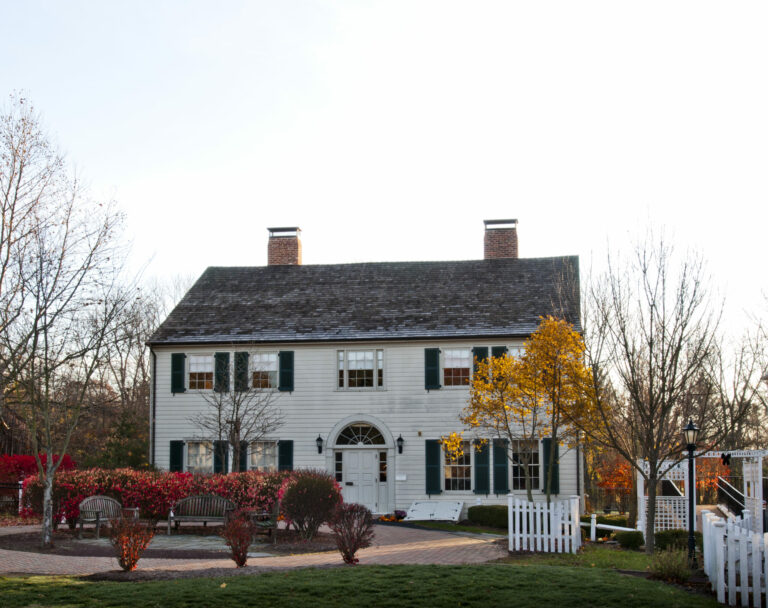The Flemington Community Partnership and the Hunterdon County Historical Society have produced a new, free self-guided walking tour of historic Flemington—one of New Jersey’s most historic square miles—that is now available in an eight-page brochure and online here.
The 30-stop tour covers one-square-mile area and is designed to be walked in less than an hour. Locations include architecturally significant and historical buildings, a park, a horse fountain and a 1750 gravesite.
The walking tour brochure describes Flemington as a fascinating crossroads for commerce, agriculture and culture dating back thousands of years to the Lenni Lenape people and continuing through the first European settlers in the 1600s to the present day.
“Historic Flemington has so many beautiful buildings and walkable streets,” said Ann Meredith, executive director of Flemington Community Partnership. “We wanted to give our visitors a fun way to travel through centuries of history—while enjoying the great charm of our small town.”
Patricia Millen, executive director of the Hunterdon County Historical Society, added: “Hunterdon’s beautiful county seat is one of New Jersey’s most historic towns, with 65 percent of the borough on the National Register of Historic Places.” She added that Flemington is unusual architecturally because it contains so many different time periods, including Greek Revival, Italianate, Queen Anne and Victorian. “You can see the variations of styles through the centuries,” she said. “What’s special about Flemington is that so many of those buildings are preserved.”
A few walking tour highlights:
Hunterdon County Courthouse, 75 Main Street – Built in 1828 on the site of the original courthouse, the structure was renovated to appear as it did during the famous 1935 Lindbergh baby kidnapping trial. The stone jail at the rear held the accused kidnapper, Bruno Hauptmann, during the trial.
Union Hotel, 76 Main Street, 76 Main Street – Journalists from around the world stayed here when covering the Lindbergh trial.
Samuel Fleming House, 5 Bonnell Street – Once called Fleming Castle, was the home of Irish-born Fleming, an early settler and tavern owner for whom the town is named. Preserved by the Daughters of the American Revolution, it is now a house museum with a garden where many community events are held, including free weekly yoga sessions.
Chief Tuccamirgan’s Grave, between 56 and 60 Bonnell Street – The Delaware Indian chief formed a close friendship with the family of John Phillip Case, who lived on the site of the Dvoor Farm. According to legend, Tuccamirgan was buried in a sitting position, facing east with his tomahawk.
Children’s Choir School, 3 Chorister Place — Originally a stable, it housed a choir school from 1895 to 1958 that was credited with starting the national junior choir movement for singers from all religious denominations.
Deats Building, 120-124 Main Street – With eight chimneys, this 1881 building eventually became the first structure in Flemington to have electricity and telephones. It was owned by wealthy gentleman farmer Hiram Deats, who made sure that the neighboring building – now the Flemington Free Public Library – would sit back from the road so he could have an unobstructed view of town.
Stangl Pottery Factory, 12 Mine Street — Three large kilns, where the highly collectible Fulper and Stangl pottery were made, are the centerpiece of this renovated space that’s used today as an art gallery, farmers’ market, coffee shop, restaurant and concert venue.
The Reading/Large Residence, 119 Main Street – An ornamental Greek Revival house whose two-story white columns are a commanding presence in town. Now home to the Hunterdon County Chamber of Commerce, the building was one of several constructed by local country carpenter Mahlon Fisher, who became a master builder. Fisher also built the Doric House on 114 Main Street, now home to the Hunterdon County Historical Society, and brought the Greek Revival style to the Samuel Southard Law Office on 59 Main Street, which in the 1920s was used as a women’s public restroom.
The brochure is available at the kiosk on Main Street just north of the Hunterdon County Historical Society on 114 Main Street. It can also be picked up at the Hunterdon County Historical Society on Thursdays between 10 a.m. and 4 p.m., and downloaded at exploreflemington.com and hunterdonhistory.org.
There are also many dining and shopping options along the tour route. For more information, visit exploreFlemington.com or hunterdonhistory.org. Flemington Community Partnership is a nonprofit organization dedicated to creating a thriving business community for all to enjoy. The Hunterdon County Historical Society, headquartered in Flemington, is dedicated to collecting, preserving, and sharing the history of Hunterdon County.



